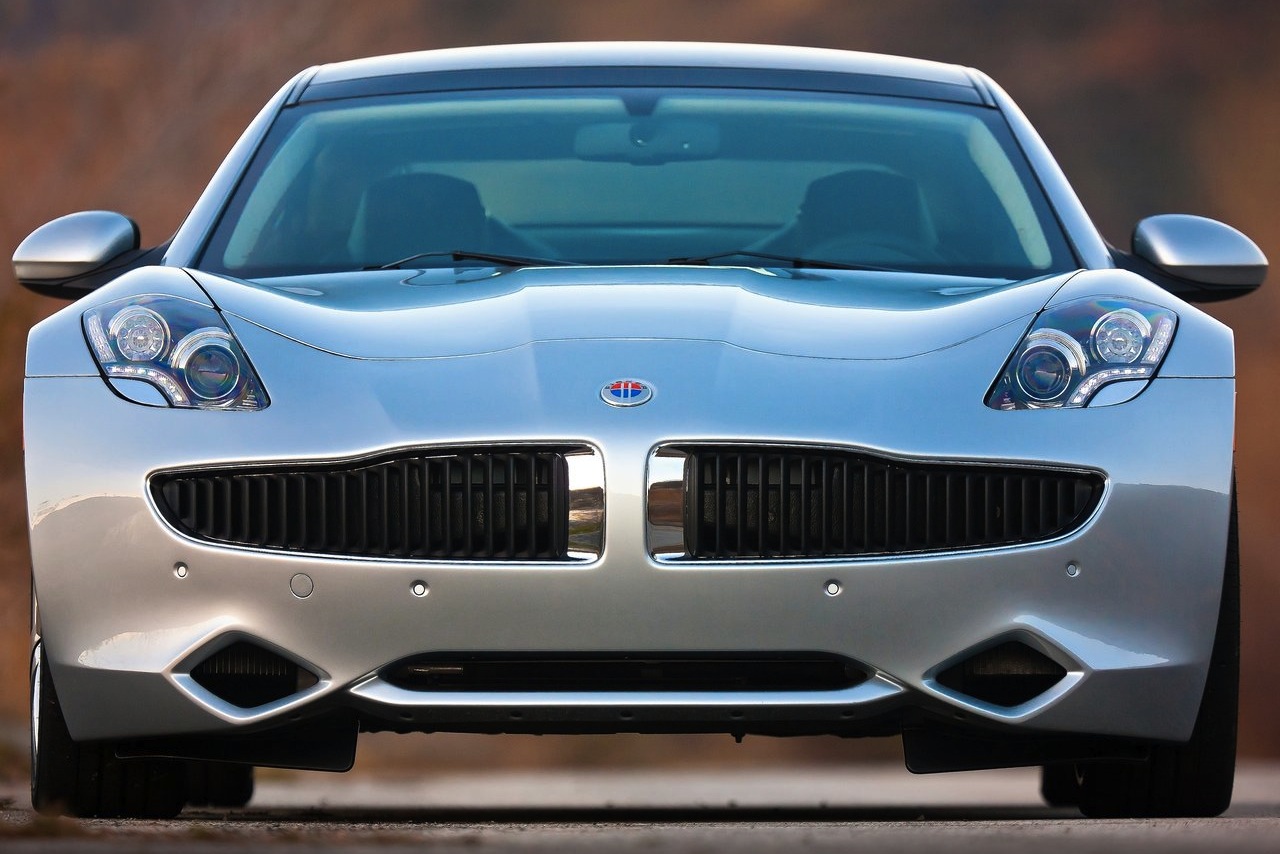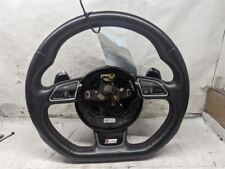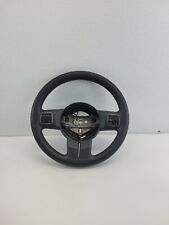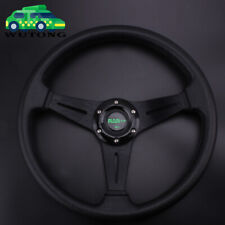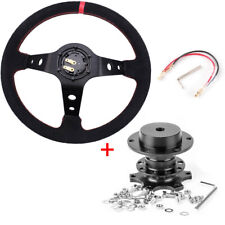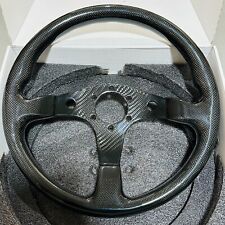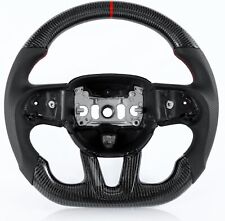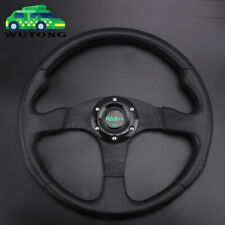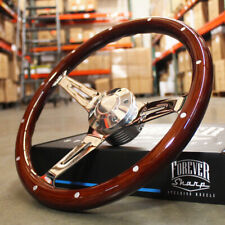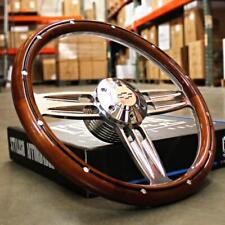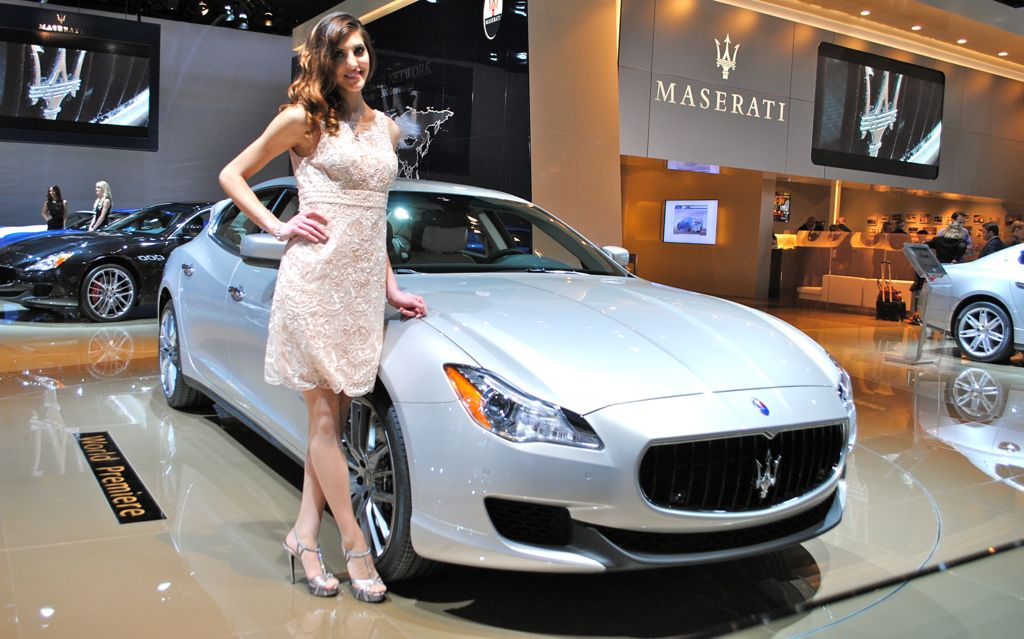2010 LA Preview: First factory-built Fisker Karma to make North American debut
At the 2010 Paris Motor Show Fisker Automotive unveiled the first factory-built version of the Karma plug-in hybrid sedan with extended range capability. The unit will now make its North American debut at the 2010 LA Auto Show later this week.
“The Fisker Karma represents our goal of bringing an eco-friendly vehicle founded on the principles of ‘Pure Driving Passion’ to consumers around the world,” said Henrik Fisker, CEO. “As a center for style and culture made up of people who are proud to express their personalities and their concern for the environment, Los Angeles is the perfect place for the Karma to make its North American debut.”
Click here for more news on the Fisker Karma.
In its press release, Fisker says that the Karma is the “first and only true electric vehicle with extended range” – we wonder how the folks at General Motors feel about this with all the controversy surrounding the Chevrolet Volt.
We’ll be in LA live covering the show – make sure you join us for live coverage starting Nov. 17.
Refresher: Power comes from Fisker”s Q-DRIVE system, which is made up of two 201-hp electric-motors that are powered by a lithium-ion battery pack. That allows the 2010 Karma to travel up to 50 miles without the use of any gasoline. A generator attached to a 260-hp turbocharged 2.0-liter Ecotec direct injection gasoline engine by General Motors provides an extended range of up to 300 miles. 0 to 60 mph comes in 5.8 seconds with a top speed of 125 mph.
Press Release:
FISKER AUTOMOTIVE’S FIRST FACTORY-BUILT KARMA TO MAKE NORTH AMERICAN DEBUT AT L.A. AUTO SHOW
Karma is the first and only true electric vehicle with extended range.
IRVINE, CA ““ November 11, 2010: The first factory-built Fisker Karma, the first and only true electric vehicle with extended range, will make its North American debut at the Los Angeles International Auto Show November 17-28.
Designed and engineered by Southern California automaker Fisker Automotive (www.fiskerautomotive.com) the four-door Karma is the embodiment of the design-driven company’s firm belief that environmentally conscious cars need not sacrifice passion, style or performance.
By combining world-class style and performance with industry leading efficiency and the lowest emissions of nearly any production car the Fisker Karma is the only responsible option for luxury car buyers.
Driven only by electric motors at all times the Karma delivers the zero-tailpipe-emissions of an all-electric vehicle and eliminates Range Anxiety with the 300 mile (480 km) range of a traditional gas-powered car.
Responsible Luxury™
Fisker Automotive’s commitment to purity throughout the Karma reflects its dedication to introducing sustainability and accountability to luxury automotive design – Responsible Luxury™. To date, Fisker Automotive has 70 patents for the Karma.
The company’s message has always been clear: Designing a beautiful vehicle with innovative technology provides drivers the ultimate freedom, fusing green technology with energy independence. It also involves an unwavering commitment to purity.
For example, when sourcing environmentally conscious and sustainable materials, if Fisker designers and engineers felt existing technologies did not meet their exacting standards, they developed new, superior approaches that resulted in several proprietary designs.
One of these unique technologies is the world’s largest continuous solar panel roof for an automobile. This beautiful, sculptural form captures the power of the sun to help power the Karma.
The pursuit of pure design also led Fisker to create one of the most sustainable and accountable interiors in automotive history.
To process the leather for the Karma’s Eco-Sport™ interior a 100% sustainable manufacturing strategy is used, resulting in one of the highest yields in the industry. This process is conducted at the world’s first energy self-sufficient, closed loop leather manufacturing plant where both gas and electricity are generated on-site from by-products of the leather making process.
The Karma’s interior wood wings and accents are also unique and sustainable, sourced from certified Fallen, Sunken and Rescued Wood™ to create a luxurious sensory experience inspired by nature. No live growth is ever used.
Fisker sees beauty in giving new life to wood sourced from trees damaged during the 2007 Southern California wildfires by featuring it in one of the most sustainable interiors in automotive history. Instead of artificially treating living trees harvested from Brazilian rain forests, as is the industry standard, Fisker searched its own back yard to source the Karma’s Rescued Wood™ wings and accents. These highly sought after old growth woods were salvaged from over 230,000 acres of scorched land and are available as part of the Karma’s animal-free Eco-Chic™ package option.
From Concept to Reality, Unchanged
Designed by Fisker Automotive co-founder, CEO and executive design director Henrik Fisker, the four-door, four-passenger Karma combines world-class style and performance with industry leading efficiency and the lowest emissions of nearly any production car resulting in an uncompromised, premium vehicle that sets the tone for the future of driving.
Mr. Fisker is responsible for designing some of the most desirable and iconic luxury sports cars of the modern era, including the Aston Martin V8 Vantage, Aston Martin DB9, BMW Z8 and others.
With exotic car looks, sports car performance, an achievable annual average economy of 100 mpg (2.4L/100 km) and emissions of just 133g/mi (83g/km), the 403 hp (300 kW /408 PS) Fisker Karma is the only truly responsible alternative to traditionally powered luxury cars.
True to Fisker’s goal of bringing the Karma concept to reality in its original form, the production car retains, and even adds to, all of the original concept’s elegant design, dramatic proportion and unique features.
“Too often concept cars are just that ““ concepts,” Henrik Fisker said. “As car enthusiasts we wanted to see all that excitement and imagination make it to production. It’s what keeps us in love with cars. I feel our team has succeeded in every way.”
Most notable is the Karma’s athletic appearance. At 196.7 in. (4.99 m) long, 78.1 in. (1.98 m) wide and just 52.4 in. (1.33 m) high, the Karma’s final production dimensions remain virtually the same as the concept’s.
A long hood — accentuated by a large dash-to-axle ratio — and short deck give the Karma a timeless silhouette. Its expansive (124.4 in. [3.16 m]) wheelbase, short (35.9/36.3 in. [913/923 mm] f/r) overhangs and wide (66.6/67.0 in. ““ [1.69/1.70 m] f/r) track reinforce the Karma’s performance orientation even when standing still.
Also retained from the concept are the 22-inch aluminum-alloy Circuit Blade™ wheels and the world’s largest solar panel roof for an automobile, which, along with other details, communicate the car’s advanced technology and environmental purpose.
The Fisker Karma is the first car to be equipped with 22-inch wheels as standard equipment.
In addition, the production Karma keeps the concept’s complex parting lines around front and rear fascias, along with the industry’s tightest tire-to-wheel arch relationship. These details enhance the Karma’s overall design and set it further apart from its competitors.
The most significant visible exterior change from the concept is the addition of B-pillars, which increase the Karma’s structural rigidity and help it meet global crash protection requirements.
Unique to the segment is the Karma’s absence of external window frames between rear door-glass panes, which improves aesthetics and reduces wind noise.
Also improving aesthetics is the Karma Command Center™ — the industry’s first and, at 10.2 in. (25 cm), largest haptic feedback touch screen ““ which elegantly consolidates into a single location controls for automatic dual-zone climate, audio/infotainment, phone, navigation and vehicle systems.
Like the concept, the production Karma has a four-seat cockpit with a large center console running from the dashboard to the rear seatback, which houses the rechargeable Lithium ion battery.
This console incorporates intuitive gear selector buttons in place of the concept’s original shifter, as well as electric window controls, rear seat-heater switches, storage and a convenient cup holder for each occupant.
Q-Drive® Advanced Technology Power
The Karma is the first and only true electric vehicle with extended range. With no mechanical link between gas engine and drive wheels, Fisker’s exclusive Q-Drive® powertrain frees the internal combustion engine to work at its highest efficiency by turning only the attached 175 kW generator, which sends power directly to its two electric traction motors.
With 403 hp (300 kW) and 981 lb-ft (1,330 Nm) of torque at zero rpm the Karma can quickly reach Autobahn speeds, yet achieve better annual average fuel economy and lower CO2 emissions than nearly any other production car.
With a total range of 300 miles Karma drivers will not be concerned about Range Anxiety. By leveraging the world’s existing gasoline infrastructure to power its range extending generator as needed, the Fisker Karma retains the full freedom drivers expect from their cars.
Fifty miles (80 km) are electric-only and tailpipe-emission free when powered only by its 20 kWh Lithium ion battery, which can be recharged in as little as six hours on standard 240-volt current.
When the battery is depleted, or when the driver engages Sport mode, the Karma’s 2.0L, turbocharged four-cylinder Ecotec gas engine automatically turns a 175 kW generator that sends electricity to two 201.5 hp (150 kW /204 PS) electric traction motors mounted directly to the rear differential.
This single speed gearbox ensures a smooth, constant delivery of power to the wheels without hesitation, all the way to the Karma’s top speed of 125 mph (200 kmh).
World Class Manufacturing
While Fisker Automotive is globally headquartered in Southern California, the Karma will be built by Valmet Automotive at its state-of-the-art flexible assembly plant in Finland.
Fisker partnered with Valmet because the 41-year-old company was able to meet Fisker’s strict requirements of cost-effectively building 15,000 high quality, advanced technology vehicles per year for international markets.
Since 1969 Valmet has built more than 1.1 million vehicles for demanding customers all over the world, and currently builds Porsche Boxster and Porsche Cayman sports cars for Porsche AG.
Creating Jobs in California, and Around the World
Fisker Automotive is contributing to California’s economy, and the world’s, by creating jobs and developing technology that will protect the environment from harmful fossil fuel emissions, reduce America’s dependence on oil as a transportation energy source.
Since early 2010 Fisker Automotive has more than doubled its full time staff to more than 100, and continues to expand. The company is hiring the most talented experts and expects to fill an additional 75-100 positions in the next six to eight months.
This does not include the hundreds of additional people around the world ““ many co-located at Fisker’s global headquarters in Irvine ““ already working for Tier 1 suppliers and other vendors supporting the company’s two plug-in hybrid programs.
ABOUT FISKER AUTOMOTIVE, INC.
Fisker Automotive is an American premium plug-in hybrid electric vehicle manufacturer with a mission to redefine the luxury automobile with an unwavering dedication to sustainability. Global headquarters are in Irvine, California. Acclaimed auto designer Henrik Fisker and industry veteran Bernhard Koehler established the company in 2007 to address the need for environmentally conscious vehicles that deliver passion, style and performance.
Previously, Fisker was design director and a board member for Aston Martin, as well as president and CEO of DesignworksUSA, BMW’s North American design arm. Koehler led operations for Ford’s Global Advanced Design Studio in London and created concept cars for Aston Martin, MINI and BMW.
– By: Omar Rana

